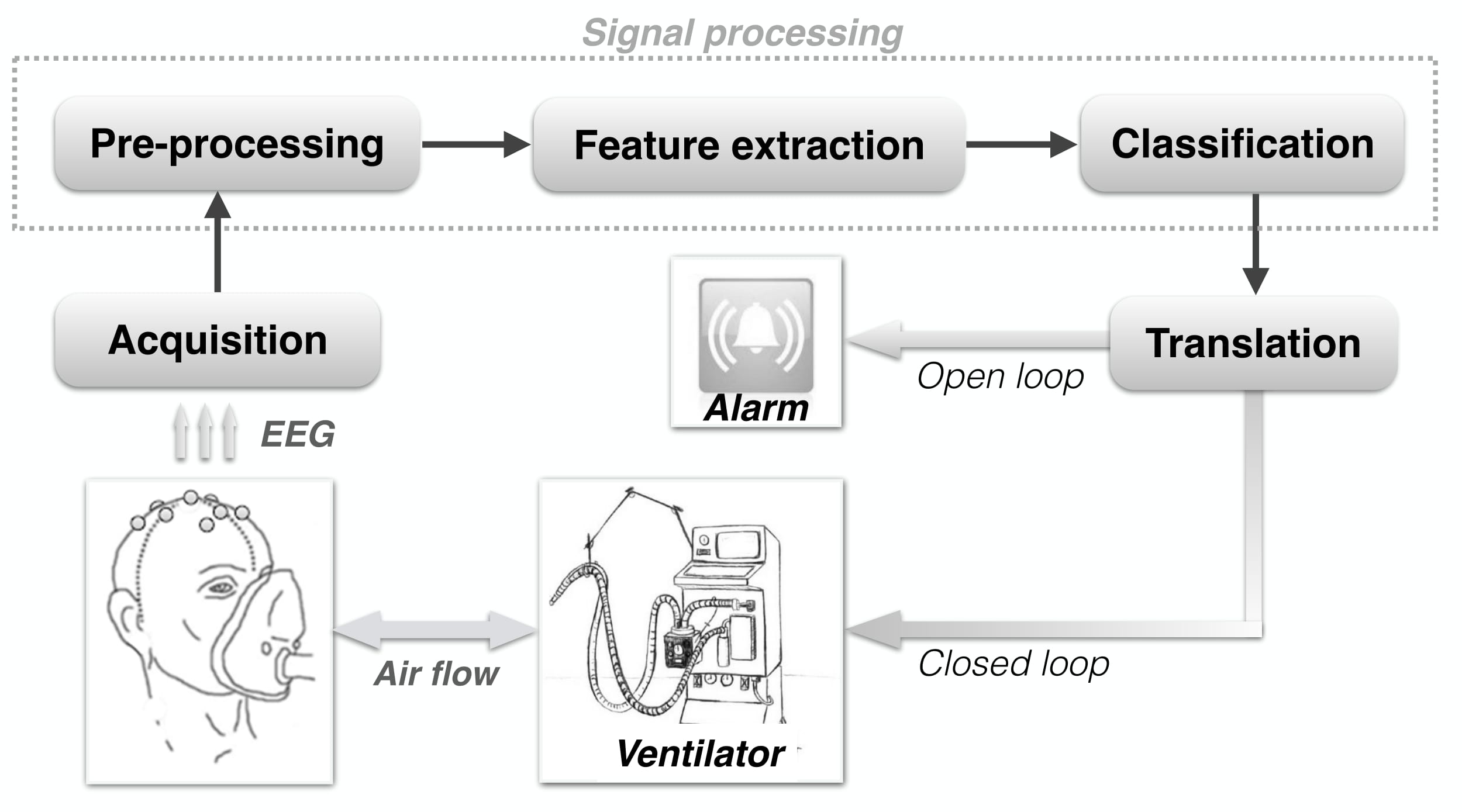Section: New Results
Riemannian geometry applied to detection of respiratory states from EEG signals: the basis for a brain-ventilator interface
Participants : Xavier Navarro-Sune, Anna Hudson, Fabrizio de Vico Fallani, Jacques Martinerie, Adrien Witon, Pierre Pouget, Mathieu Raux, Thomas Similowski, Mario Chavez [Correspondant] .
During mechanical ventilation, patient-ventilator disharmony is frequently observed and may result in increased breathing effort, compromising the patient's comfort and recovery. This circumstance requires clinical intervention and becomes challenging when patients are sedated or verbal communication is difficult. In this work, we propose a brain computer interface (BCI) to automatically and non-invasively detect patient-ventilator disharmony from electroencephalographic (EEG) signals: a brain-ventilator interface. Our framework exploits the cortical activation provoked by the inspiratory compensation when the subject and the ventilator are desynchronized (Figure 3). Use of a one-class approach and Riemannian geometry of EEG covariance matrices allows effective classification of respiratory states. The BVI is validated on nine healthy subjects that performed different respiratory tasks that mimic a patient-ventilator disharmony. Results evidence that classification performances, in terms of areas under ROC curves, are significantly improved using EEG signals compared to detection based on air flow. Reduction in the number of electrodes that can achieve discrimination can often be desirable (e.g. for portable BCI systems). By using an iterative channel selection technique, the Common Highest Order Ranking (CHOrRa), we find that a reduced set of electrodes (n=6) can slightly improve for an intra-subject configuration, and it still provides fairly good performances for a general inter-subject setting. Results support the discriminant capacity of our approach to identify anomalous respiratory states, by learning from a single training set containing only normal respiratory epochs. The proposed framework opens the door to brain-ventilator interfaces for monitoring patient's breathing comfort and adapting ventilator parameters to patient respiratory needs.
More details in [25].



